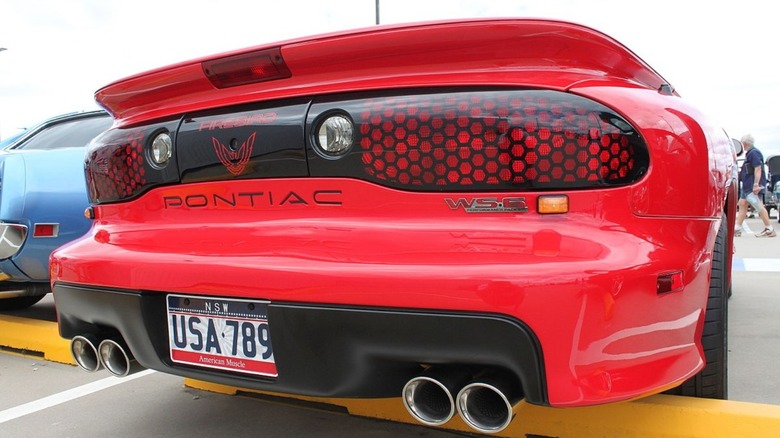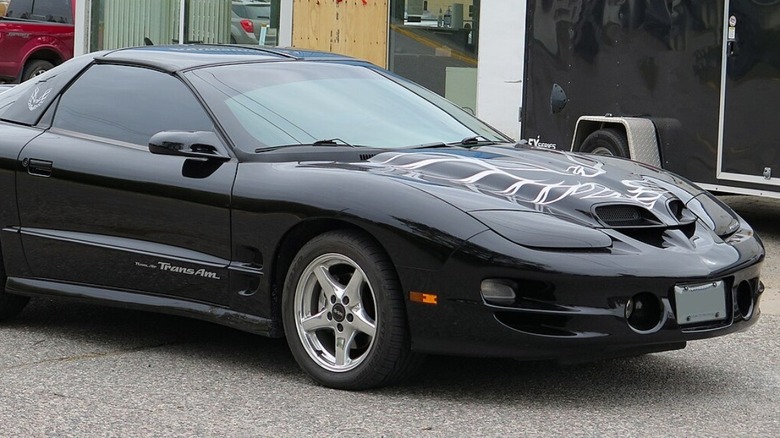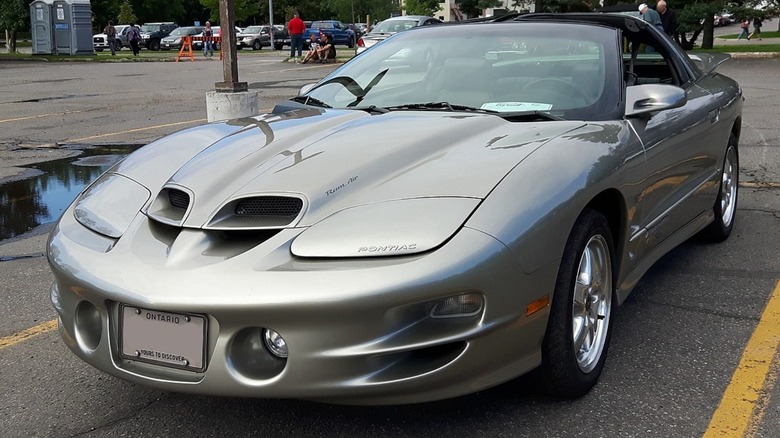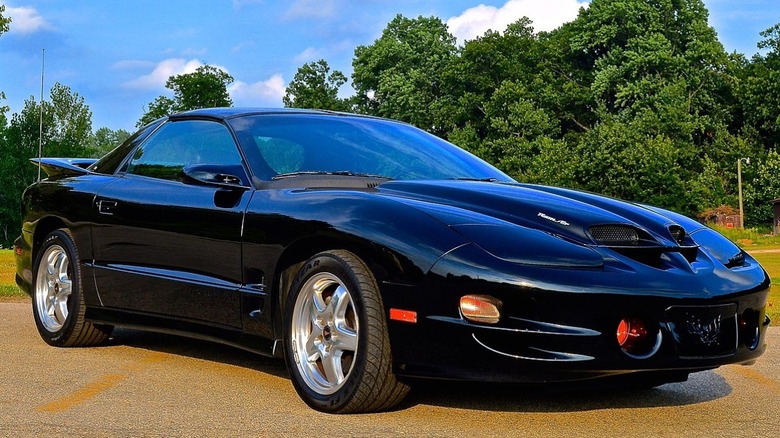What Did The WS6 Package Add To The Pontiac Firebird?
The Pontiac Firebird and its Trans Am specialty package are among the defunct brand's most iconic vehicles. Throughout their run, the WS6 performance package was a staple, primarily for the Trans Am and other higher trim levels like the Firebird Formula.
The WS6 package was offered off and on for certain models from 1978 until the tragic discontinuation of the Firebird family in 2002 (Pontiac itself disappearing less than a decade later in 2010). The GTA and Formula trims of the third generation included this upgrade as standard, both being premium-spec versions of the base Firebird.
As with many other classic pony cars, certain WS6-equipped Firebirds have become desirable collector's items — a relic of a formidable time in automobile history. The different versions of the WS6 package enhanced suspension and aesthetics as well as raw power, making for valuable additions to the Pontiac lineup. Let's explore when the package was introduced, how it evolved over the years, and how long it was available for the broader Firebird family.
[Image by Jeremy via Wikimedia Commons | cropped and resized |CC BY-SA 2.0]
What was the Firebird WS6 package?
Upon its introduction in 1967, the Pontiac Firebird had a stiff challenge ahead of it. With competing pony cars like Ford's iconic Mustang staring it down, it was vital that the Firebird family didn't lag behind. The WS6 package was one option that helped deliver the needed performance, adding a little extra oomph to the classic Pontiac car
The first iteration of the WS6 package arrived in 1978, late in the vehicle's second generation. It didn't represent a dramatic change in the model's architecture, but it did provide a modest performance and design improvement for a price that didn't break the bank. The original WS6 Trans Am Special Performance package added an additional $324 to the price of the model and mainly brought enhancements to the vehicle's suspension. These included a new 14:1 ratio gear box, larger snowflake wheels, and a rear sway bar and bushings that were more robust.
While such additions weren't essential for every driver, the WS6 package became a solid option for prospective buyers in the market for a little extra. There was more to come from the WS6 package as new generations of the Firebird family arrived, too.
[Image by Elise240SX via Wikimedia Commons | cropped and resized |CC BY-SA 4.0]
The WS6 gave birth to the WS7
The WS6 performance package became a staple of the Pontiac brand. However, for logistical reasons, it frequently had to be tweaked. The iconic Trans Am (and the Firebird family at large) changed a lot from 1978 to the final model year in 2002, and, as you might expect, the WS6 package changed substantially over the years as well.
For second WS6 model year in 1979, performance was further enhanced with the addition of rear disk brakes. However, supply for the new brake system couldn't quite keep up with demand, prompting General Motors to introduce a slightly less premium version of the package called the WS7. With the rest of the aforementioned upgrades in place but without the rear disc brakes, this version was a bit easier to produce. The WS7 package was still a higher trim, with all other features being equal to the WS6 models.
[Image by Elise240SX via Wikimedia Commons | cropped and resized |CC BY-SA 4.0]
How long did the WS6 Firebird and Trans Am last?
The WS6 package for the fourth generation of the Trans Am added a cold-air induction system, which helped to boost output from the standard model's 285 horsepower to 305. This generation of the family began with the 1993 model year, but it wasn't until '96 that this new WS6 package was made available to it.
The beginning of the decade had been a tricky one for the Firebird family, with production numbers down significantly. These woes weren't unique to Pontiac, as U.S. auto sales in general had declined by the end of the 1980s. Pontiac responded with some aesthetic changes to the Firebird family, implementing a more angular hood for the fourth generation. The LS1 engine also made its Firebird debut in 1998.
The final year of the Firebird line came in 2002, and a version of the WS6 package was available for the Trans Am that year. This was perhaps the most impressive incarnation of it, offering 350 lb-ft torque and 310 horsepower.
[Image by WMrapids via Wikimedia Commons | cropped and resized |CC BY-SA 4.0]



